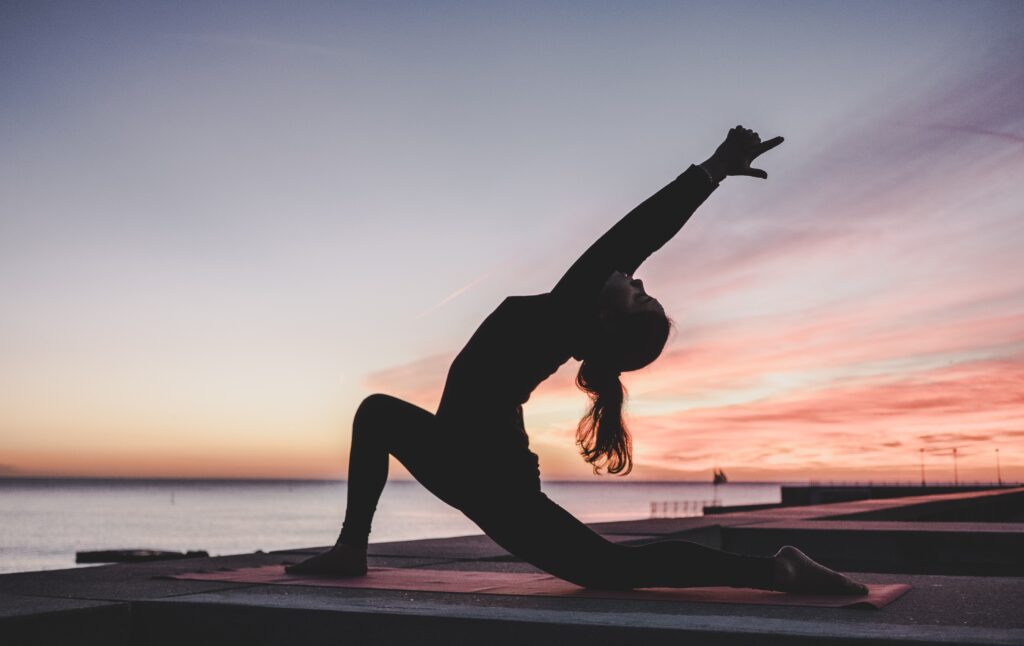
We all need to stretch in order to increase our flexibility. Many people don’t understand that stretching has to happen on a daily basis. Stretching keeps the muscles flexible, strong, and healthy, and we all need that flexibility to maintain a range of motion in the joints. Regular stretching keeps muscles long, lean, and flexible. Healthy muscles also help a person with balance problems to avoid falls.
Stretching is a type of exercise that boosts flexibility and mobility by lengthening the muscles, either by extending them or with movement.
Health Benefits of Stretching
Flexibility: Stretching aims to increase the range of motion in your joints and muscles. Enhanced flexibility can lead to improved posture and reduced muscle tension.
Lower Injury Risk: Many people believe that stretching helps prevent injuries by increasing muscle elasticity and reducing muscle tightness.
Warm-Up: Stretching is often combined with warm-up routines to prepare the body for physical activity.
Reduced Muscle Tension: Stretching helps to release muscle tension and suffering stiffness. It can be particularly beneficial for individuals who spend long hours sitting at a desk or engaging in repetitive movements, as it can counteract the negative effects of inactive lifestyles.
Corrected Posture: Stretching exercises that target muscles responsible for posture, such as those in the chest and shoulders, can help improve your posture. This can prevent back, neck, and shoulder pain associated with poor posture.
Improved Circulation: Stretching increases blood flow to the muscles being stretched, which can improve circulation throughout your body. This improved blood flow can help reduce muscle soreness and enhance recovery after exercise.
Reduces Stress: Stretching can have a calming effect on the mind and body. It encourages relaxation and mindfulness, which can help reduce stress and promote a sense of well-being.
Enhanced Athletic Performance: Athletes often incorporate stretching into their training routines to improve performance. Stretching can help increase muscle power, agility, and coordination, all of which are essential for sports and physical activities.
Pain Relief: Stretching can be an effective way to alleviate certain types of pain, including chronic conditions like lower back pain. Stretching exercises can help relax tight muscles.
Improved Flexibility for Daily Activities: Stretching can make everyday tasks easier, maintaining good flexibility and reduce the risk of injury during activities like bending and lifting.
Mind-Body Connection: Stretching encourages mindfulness and body awareness. It allows you to connect with your body, identify areas of tension, and promote relaxation, which can be beneficial for stress management and overall mental health.
One of the great things about stretching is that you don’t need any special equipment to do it. Stretching can be done anywhere at any time.
Best Time To Stretch
Before working out – Before every workout do dynamic stretches. Five to 10 minutes should be enough to get you warmed up.
After working out – More relaxing techniques like passive and static stretching are great for after a workout. These methods lengthen the muscles and connective tissues and help your body return to a balanced state, meaning your body temperature, heart rate, and blood pressure all return to normal.
If you’ve been in the same position for a long time – Stretching periodically throughout the day can ease muscle tightness if you tend to sit or stand in the same position — such as if you work in front of a computer for a long time, you’ve been sitting in a car for a while, or if you standing on your feet for several hours.
Stretching the soft tissues in the back, legs, hamstrings, and hip flexors can improve joint range of motion in the spine, which helps relieve back pain. Regular stretching keeps our muscle long, lean and flexible. Stretching before your exercise helps keeps the muscle healthy and strong. Stretching can also lead to improve flexibility as well as a better mood.
It’s important to note that while stretching offers many benefits, it should be done correctly and in variation. Overstretching or improper stretching techniques can lead to injury. It’s also important to incorporate a different types of stretching techniques into your routine to target different muscle groups and achieve well-rounded benefits. Consult with a fitness professional or any fitness home workout app to create a personalized stretching program that suits your individual needs and goals.
The Wryll-AI Home Workout Trainer app gives you proper guidance according to your body type, monitors your workouts, suggests posture adjustments, and curates and updates your plan base.